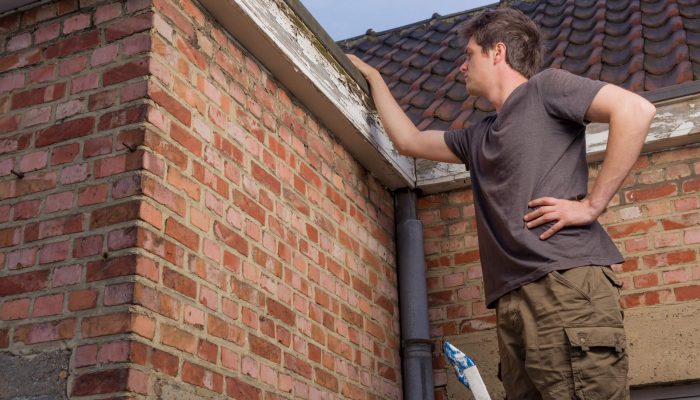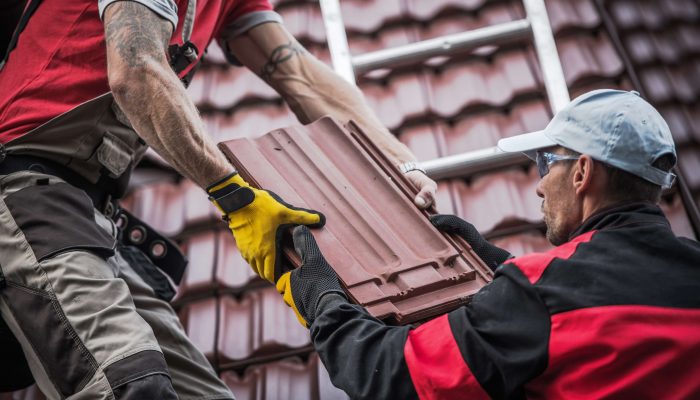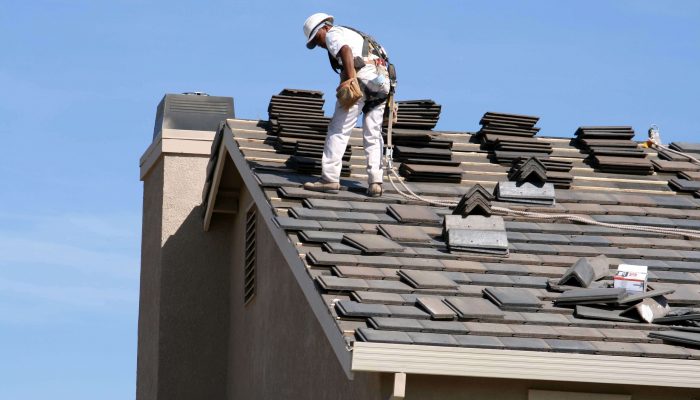Following a severe storm, it’s likely that you’ll find damage from tree branches, hail, strong winds, and other harmful weather elements that may pose a threat to your home and exterior. It’s important that you especially know how to check your roof for damage, to prevent small problems from causing greater threats to your home, health and belongings. Follow these simple steps to thoroughly and safely inspect your roof.
Check a Roof for Hail Damage or Any Damage
Start Inside
Whether you inspect after a severe storm, or make it a regular practice to keep up with the condition of your roof, the best place to start is inside. Check your ceilings and walls for mysterious water stains. Fresh stains mean fresh leaks, and newer damage. Yellowed or brown-colored stains often mean the water has been sitting in that area for some time.
When moisture makes its way into your home, it can cause serious damage as well as a variety of health concerns. Standing water in your walls and insulation creates a breeding ground for mold, mildew, rust and bacteria that can become dangerous to the structure of your home, and your health.
In addition to water stains, it’s imperative that you check the interior space closest to your roof. For many this is the attic, and for others it could be a loft or just the ceiling of your home. Whatever the case may be, make sure to check for stains and moisture that may have been let in by a failure in the roof. Your attic likely has insulation that is designed to keep the elements out. If this insulation becomes wet, it is no longer able to serve its purpose, and you know you have a problem.
Inspect Outside
When it comes to inspecting your roof, one thing should be made very clear: do not climb on it. Depending on the condition of your roof, it could be dangerous and unstable for you to walk around on. Professional roofing contractors and home inspecting experts have the tools and materials necessary to safely inspect your roof up close. Leave the roof scaling to a professional, and safely check your roof for damage from the ground.
Start with the perimeter. You’ll want to take a good walk around your home and check the ground for fallen and displaced materials. During this process, it’s a good idea to look at the siding and windows to ensure all materials and stripping is still fully in tact.
Once you’ve inspected the perimeter ground of your home, take one more lap around, this time looking for visible damage to the gutters, roof, and roofing accessories. Any shingles that are loose, flapping, broken or cracked are a good indicator that there is exposed underlay materials which are vulnerable to further damage from future elements.
Read More: Can Hail Really Damage Your Roof?
Much of the damage to your roof is not usually visible to the average homeowner. It’s always a good idea to have a certified roofing contractor inspect your roof. In the meantime, it’s important that you know how to check your roof for damage, and be able to identify the best time to call a professional roofer for help.



